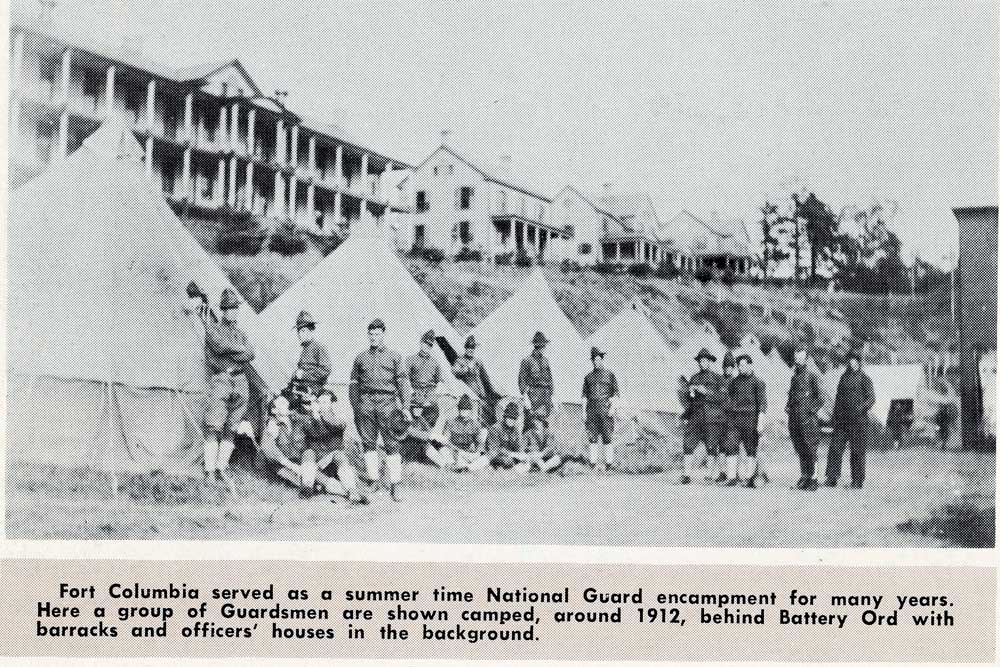Weekend Break: Historic Fort Columbia
Published 1:00 pm Friday, October 7, 2022

- A 1912 image shows members of the National Guard at an encampment near Battery Ord.
Standing tall from the north side of the mouth of the Columbia River, Fort Columbia is one of the few remaining intact coastal defense sites in the United States.
The area, originally known as Chinook Point, is part of the ancestral homeland of the Chinook people.
The Chinook used the most prominent hill in the area as a lookout point named “Nose-to-ilse.” This eventually became Scarborough Hill, named after Capt. James A. Scarborough, who settled in the area in 1843.
After Scarborough died, James Birnie, of Hudson Bay Co., took control of his estate and promptly sold the farm to Rocque Ducheney.
The federal government finally purchased the land from Ducheney’s widow in 1867 for around $3,000. Building Fort Columbia itself didn’t begin until 30 years after this purchase was made.
The Long Beach Peninsula has a history of military importance because of his proximity to the Columbia River.
Army engineers in the mid-19th century surveyed the West Coast looking for deep, defendable harbors and found just a few: San Diego, San Francisco, Puget Sound and the mouth of the Columbia.
Fort Columbia made up one leg of the “triangle of fire” that defended the mouth of the Columbia River, alongside Fort Canby, also in Washington, and Fort Stevens.
Fort Columbia, however, was built more than 30 years after its sister forts. The fort was constructed from 1896 to 1904.
While some defenses had been built at the mouth of the Columbia during the Civil War, that infrastructure had crumbled in the 30 years between the end of that war and the beginning of the Spanish-American War.
By creating Fort Columbia, the army had an unobstructed view of the river. Not only this, but the triangle of fire’s ranges now overlapped so that there wasn’t anywhere an enemy ship could escape.
The original battery at Fort Columbia was Battery Ord – named after Lieutenant James Ord, who died during the Spanish-American War. The guns in this battery functioned until World War I, when they were replaced with improved technology.
In 1899, the government purchased even more land to build up the barracks, officers’ quarters, and a hospital on site.
The fort was fully manned and operational through three wars: the Spanish-American War, World War I and World War II.
During World War II, Fort Columbia was responsible for the mines that were placed in the river to protect the area from potential invasion.
Battery 246 was also a World War II installation completed in 1945. It was one of three batteries surrounding the mouth of the Columbia, with Battery 245 at Fort Stevens and 247 at Fort Canby.
Fort Columbia was also witness to the Bombardment of Fort Stevens, which was the only time that a military base in the contiguous United States was attacked by the Axis powers. Soldiers at the fort saw flashes of light from the shells, but the location was out of their guns’ range.
The fort made up a portion of the Columbia River’s harbor defense from 1896 to 1947. After World War II, the military decided its presence was unnecessary for coastal defense and it was transferred to Washington state custody in 1950.
Today, Fort Columbia can be visited and toured. Take a self-guided interpretive walk to learn more about the area’s history.
Eli Schenk contributed to this report.





